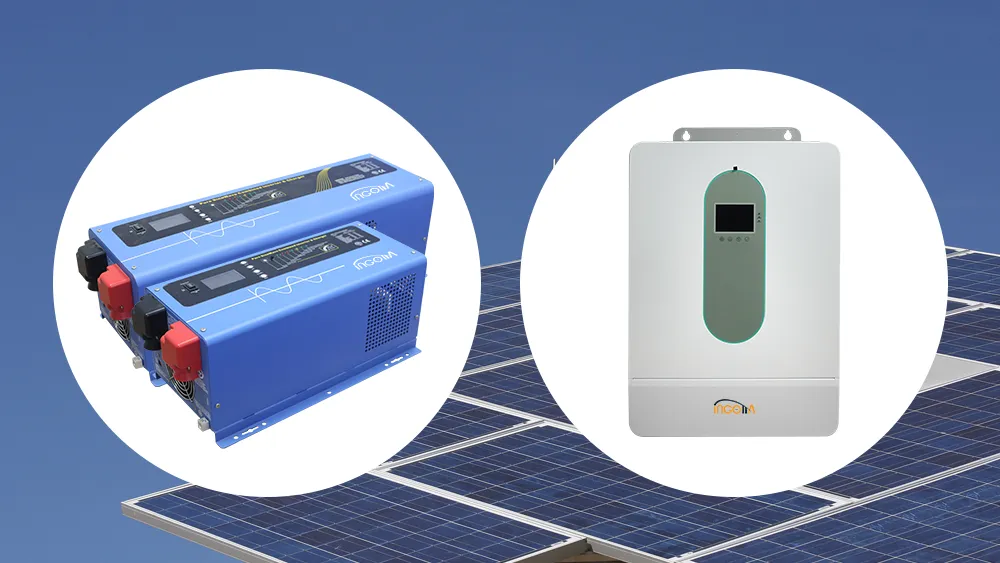Choosing the Right Inverter for Inductive Loads: High Frequency vs. Low Frequency
When it comes to powering inductive loads such as motors, compressors, or pumps, selecting the right type of inverter is crucial for performance, efficiency, and longevity. One of the most common questions is whether to use a high frequency inverter or a low frequency inverter for inductive loads. This article explores the differences between these two types of inverters and provides guidance on which is better suited for handling inductive loads.
Understanding Inductive Loads
Inductive loads are electrical devices that use coils or windings to create magnetic fields, such as those found in motors, transformers, and fluorescent lighting ballasts. These loads require a high surge of current to start up, known as inrush current, and can cause voltage drops and harmonic distortions if not properly managed. Choosing an inverter that can handle these demands is essential to avoid damage to both the inverter and the connected equipment.
High Frequency Inverters: Pros and Cons
High frequency inverter use advanced switching technology to convert DC power to AC power efficiently. They are generally lighter, more compact, and often more affordable than their low frequency counterparts. However, when it comes to inductive loads, high frequency inverters may struggle due to their limited ability to handle high inrush currents. They are better suited for resistive loads like lights and heaters, or small inductive loads with minimal startup demands.
Advantages of High Frequency Inverters:
– Compact and lightweight design
– Lower cost
– High efficiency for resistive loads
Disadvantages for Inductive Loads:
– Limited surge capacity
– Potential for overheating under heavy inductive load conditions
– Shorter lifespan when used with high-demand inductive devices
Low Frequency Inverters: The Robust Choice for Inductive Loads
Low frequency inverters are built with larger transformers and robust components that allow them to handle high inrush currents and continuous heavy loads with ease. They are specifically designed for demanding applications, making them ideal for inductive loads. The transformer in a low frequency inverter provides a buffer that absorbs surges, reducing stress on the inverter and ensuring stable operation.
Advantages of Low Frequency Inverters:
– Excellent surge capacity for starting motors and compressors
– Durability and longer lifespan
– Better performance under heavy loads
– Reduced risk of overheating
Disadvantages:
– Heavier and bulkier design
– Higher initial cost
– Slightly lower efficiency for light loads
Which Inverter Should You Choose for Inductive Loads?
For inductive loads, a low frequency inverter is generally the recommended choice. Its ability to handle high startup currents and provide consistent power under heavy load conditions makes it more reliable and safer for devices like refrigerators, air conditioners, power tools, and water pumps. While high frequency inverters may work for smaller inductive loads, they are not built to withstand the repeated stress of high inrush currents, which can lead to premature failure.
Key Considerations:
-Load Type: Identify the specific inductive loads you need to power.
-Surge Requirements: Calculate the peak surge current needed for startup.
-Budget: Weigh the initial cost against long-term reliability.
-Space and Portability: Consider the size and weight if mobility is important.
Conclusion
When powering inductive loads, the choice between a high frequency inverter and a low frequency inverter is clear: low frequency inverters offer superior performance, durability, and safety. Their robust design and ability to manage high inrush currents make them the ideal solution for motors, compressors, and other inductive devices. While high frequency inverters may be suitable for less demanding applications, investing in a low frequency inverter ensures reliable operation and protects your equipment from potential damage. Always assess your specific needs and consult product specifications to make the best decision for your power requirements.
Table of Contents
